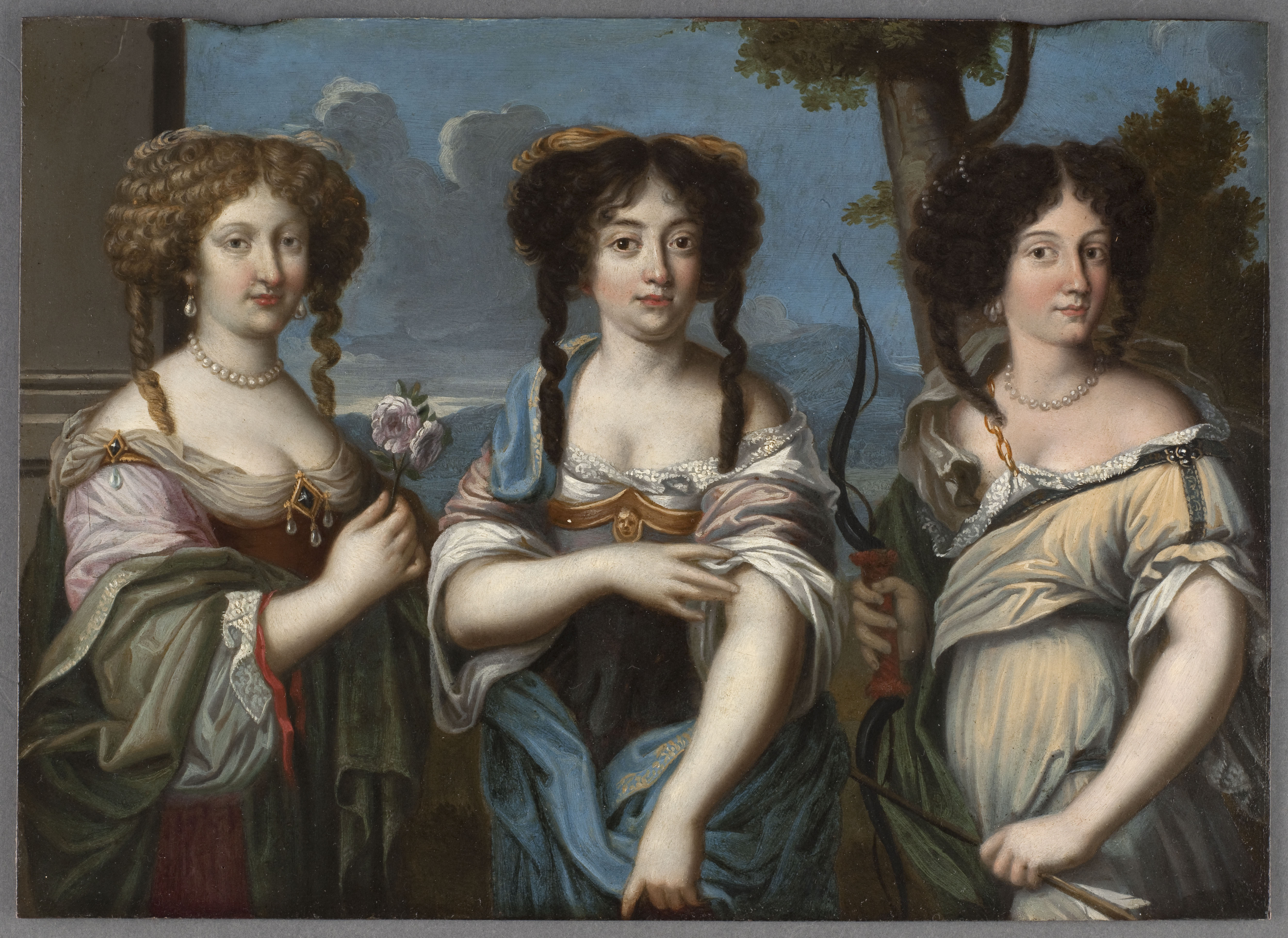
Hortense was born in 1646 in Rome, to Baron Lorenzo Mancini and his wife, Girolama Mazzarani. She is remembered because her uncle was the famous Italian Cardinal; Cardinal Mazarin, chief minister to Louis XIV of France. Cardinal Mazarin was highly influential at the French court during Louis XIV’s minority; many believed he was romantically involved with Louis’ mother Anne of Austria, as the two were always in each other’s company.
When Girolama was widowed, she decided to arrange for Hortense and her four sisters; Laura, Olympe, Marie and Marie Anne to be sent over to Paris, where their uncle could find suitable marriages for them. Two other nieces of the Cardinal, Anne Marie and Laura Martinozzi, also made the journey. The seven girls began to be known as the Mazarinettes. Anne of Austria took to the girls and treated them like Princesses of the blood, due to their high rank.
The Cardinal rejected a proposal for Hortense’s hand, from the then exiled English King Charles II and Hortense was instead married to one of the richest men in Europe, a man named Armand-Charles Duc de Meilleraye. The couple became the Duc and Duchesse de Mazarin after their marriage. Hortense was fifteen at the time of her wedding, and her husband was twice her age.
The couple’s marriage was unhappy from the start; Armand was controlling and abusive, he did not let Hortense have male friends, he would edit out any nudity from his collection of fine paintings, and he even went as far as removing the front teeth of female servants so that they would be less attractive to men. During this time, Hortense began to have an affair with another woman named Sidonie, as soon as Armand found out about this, he placed both girls in a convent. From Hortense’s accounts of her time there, we know that the pair did not take this punishment seriously and before trying to escape, they played many practical jokes on the nuns. After having four children together, during seven years of marriage, Hortense did something very uncommon in the Seventeenth century and left her husband.
Hortense escaped from her husband but had to leave her children behind. Louis XIV and the Duke of Savoy both offered themselves as her protector and granted financial aid to the runaway. Hortense soon became mistress to the Duke of Savoy, living with him until his death. The death of the Duke led to Armand seizing control of Hortense’s finances again, and she was left penniless. Hortense was saved by quite a bizarre life-line from England. The English ambassador to France, Ralph Montagu was trying to raise his own status at English court, and he believed Hortense could help him to do this. At the time Charles II was enamoured with his long-standing mistress Louise de Kerouaille, many believed Louise had far too much influence on the king and was too involved in politics. Hortense set off for England, disguised as a man and went along with Montagu’s scheme and soon became mistress to King Charles II. While Louise de Kerouaille was never truly supplanted, as she was with Charles until his death, Hortense did manage to put an end to her dominance at court. Charles rewarded Hortense with a yearly pension for her services.
Hortense’s licentiousness brought her downfall at English court. There is plenty of evidence to back up a rumour that Hortense was having a relationship with Anne, Countess of Sussex. Charles was not really interested in what Hortense did with her love life usually, but Anne was Charles’ daughter. This scandal paired with an affair with the Prince of Monaco saw Hortense fall from Charles’ favour, although they did stay friends. Hortense lived out her life in London, cared for by James II after Charles’ death. She goes down in history as one of the first-ever women to publish her own memoirs. The diarist John Evelyn claims that Hortense drank herself to death, although this was not proven.
Hortense’s legacy as a royal mistress was carried on by her great-granddaughters, the four famous De Nesle sisters who were all mistress of King Louis XV. 1

Be the first to comment